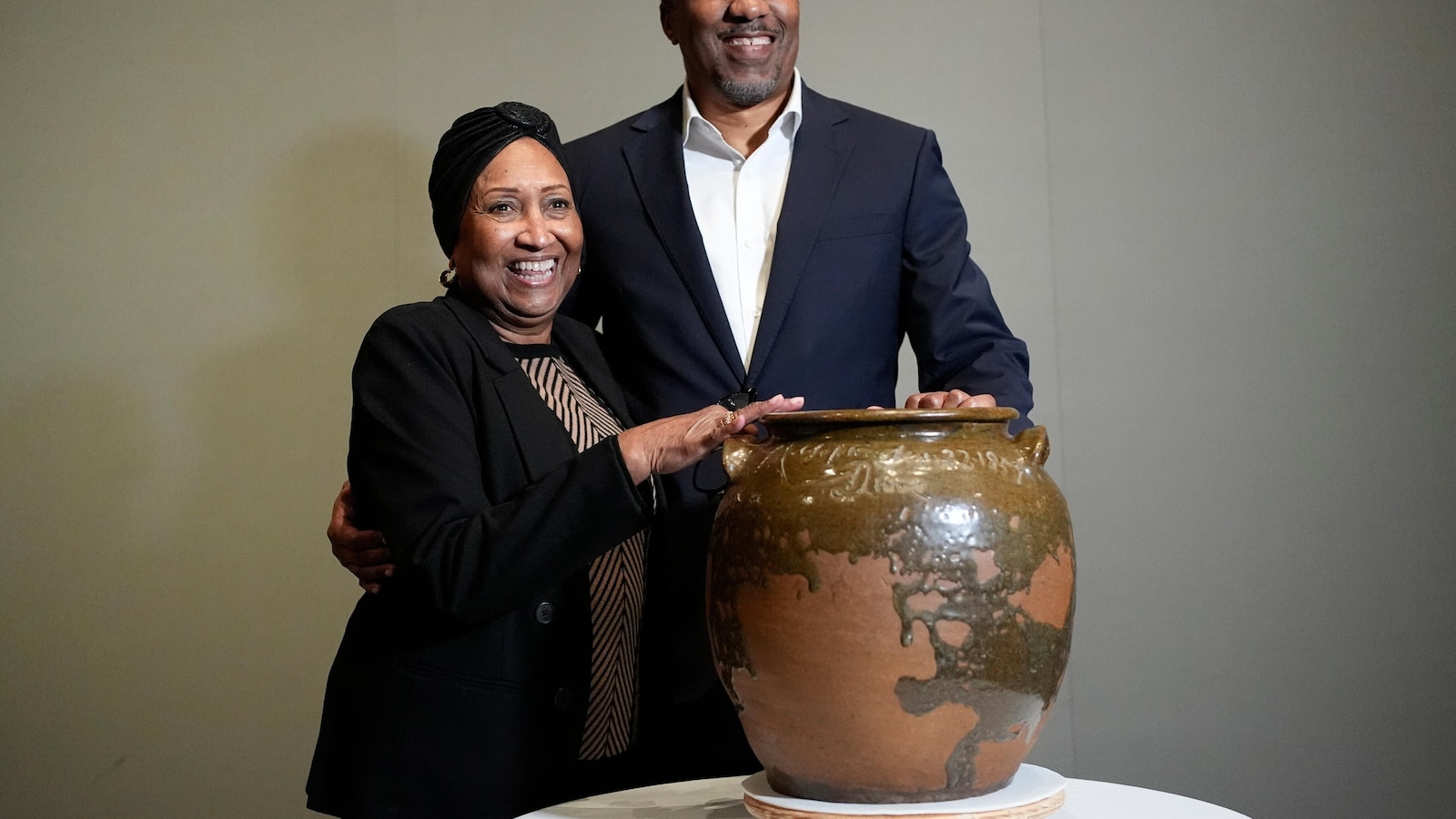The family of David Drake, an enslaved potter known as “Dave the Potter,” has reclaimed two rare stoneware jars he crafted in South Carolina nearly 175 years ago, marking a historic moment in art restitution in the United States. This case is considered the first major U.S. art restitution involving works created by an enslaved person, shedding new light on the legacy of enslaved artists and their creative contributions during the pre-Civil War era.
David Drake was an enslaved man who worked in alkaline-glazed stoneware potteries in Edgefield, South Carolina, during the decades leading up to and including the Civil War. What set Dave apart was his extraordinary act of signing many of his jars and inscribing some with rhyming couplets. At a time when literacy among enslaved people was not only suppressed but criminalized, Dave’s inscriptions were a bold assertion of his identity and authorship. His work stands as a powerful testament to his humanity and creative spirit amidst the brutal conditions of slavery.
The recent restitution involved two of Dave’s stoneware jars held by the Museum of Fine Arts (MFA) in Boston, an institution that owns numerous pieces of his work. The jars were returned to Dave’s descendants under an agreement that experts say is groundbreaking, as tracing ownership or lineage of enslaved people’s work is often impossible due to their denied legal personhood and lack of documentation.
For Dave’s family, the return of these jars represents much more than the recovery of physical artifacts. Yaba Baker, Dave's fourth-generation grandson and a children’s book author, described the event as “a spiritual restoration.” He emphasized that many Black families find it difficult to trace their ancestry beyond a few generations, and reclaiming Dave’s work gave his family a tangible connection to their roots. “We want people to know that this person, Dave the Potter, who was told he was nothing but a tool to be used, realized he had humanity. He deserved his own name on his pots. He deserved to write poetry. He deserved to know who he was,” Baker said.
The jars themselves carry deep historical and emotional significance. One of the vessels bears the date July 12, 1834, etched alongside Dave’s name. This jar would have been sold by his owner and used to store food rations for enslaved people, likely on a cotton plantation in South Carolina. Dave inscribed it with the couplet: “Put every bit all between / Surely this jar will hold 14,” indicating the jar’s 14-gallon capacity. This jar was the first of hundreds, perhaps thousands, of stoneware jugs and jars Dave crafted during his lifetime.
Dave’s poetry often reflected Christian themes, but as he aged, his inscriptions grew more personal and reflective of his experience as an enslaved man. One of his most poignant poems, etched onto a jar dated 1857—the period when Dave and his family were likely separated by sales to different owners—reads:
“I wonder where is all my relation / friendship to all – and every nation.”
This line resonates deeply with Dave’s descendants, who see the restitution as a direct answer to his haunting question about his separated family and lost connections. It reflects the profound grief and fragmentation imposed by slavery, as well as the enduring hope for kinship and unity.
The journey of these jars from their creation to their return to Dave’s family is remarkable. After Dave’s death, the jars’ whereabouts became unclear until the MFA purchased them in 1997 from an art dealer. According to Ethan Lasser, Chair of the MFA’s Art of the Americas department, the jars likely survived due to “benign neglect” — their large size and fragility made them difficult to move or destroy. The MFA holds at least two of Dave’s 1857 pots, known as the “Poem Jar” and the “Signed Jar.”
One of the jars returned to the family was sold back to the museum to ensure that the public could continue to learn from Dave’s legacy, while the other remains on loan to the MFA. The museum has chosen not to disclose the financial details of the transaction. Baker explained the family’s motivation behind this decision: “We don’t want to hide them away in our house. We want other people to be inspired by it.”
Dave’s inscriptions reveal much about his life and work. On one pot, he wrote, “I made this Jar = cash – / though its called = lucre Trash

